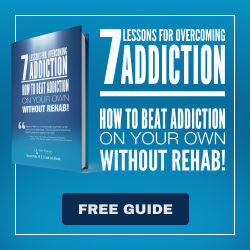Addiction Isn’t Inherited — It’s Learned Through Life Experience (Blog 4)
Note from the author:
Welcome to post four in my 15-part blog series based on Outgrowing Addiction: With Common Sense Instead of “Disease” Therapy, the book I co-authored with Dr. Stanton Peele. I’m Zach Rhoads, and while the book was a collaboration, these posts reflect my own voice and experience. This one’s especially personal—because it’s about where addiction starts, and why the story we tell about that matters more than ever.
The Big Myth: “Some Kids Are Just Addicts”
I work with kids every day. I’ve coached teens, supported families, and collaborated with schools across Vermont and beyond. If there’s one idea I wish I could erase from our collective mind, it’s this:
“Addiction runs in families.”
Yes, kids mimic their parents. Yes, behaviors repeat. But the idea that a child is born with an invisible addiction gene that predetermines their future? That’s not science. That’s fatalism dressed up in lab coats.
And it’s deeply unhelpful.
Kids Learn Addiction the Same Way They Learn Everything Else
Let’s think like behaviorists for a second (Yuck! I’m sorry. bear with me). When a child learns to ride a bike, throw a tantrum, or tie their shoes, they’re doing it through experience, trial and error, modeling, and feedback.
Addiction is no different. It’s not an inherited defect. It’s a coping strategy—a pattern of behavior that emerges when it works (even temporarily) to relieve distress or meet unmet needs.
In short, addiction is a solution before it becomes a problem.
That’s how it shows up for kids, especially those growing up in unstable or under-resourced environments. The behavior isn’t irrational; it’s adaptive.
A Real Example: Kenny
In the book, Stanton Peele and I describe a kid named Kenny. He was labeled a “problem child” and sent to therapy for anger and attention issues. Everyone was looking for a diagnosis. But what they missed was that Kenny lived in chaos: his father was incarcerated, his mother had multiple addictions, and no adult in his life consistently listened to him.
Kenny didn’t need a label. He needed safety, structure, and a reason to believe life could get better.
When he found even a glimpse of those things through his relationship with a supportive adult, his behavior started changing—without medication, without “tough love,” and without pathologizing him.
Risk Factors Are Real—But They’re Not Destiny
Of course, there are risk factors. Kids with parents who misuse substances are more likely to experiment with drugs. Kids exposed to chronic stress are more likely to seek relief through substances or compulsive behaviors. That’s not in dispute.
But risk isn’t destiny. It’s just context. And context can change.
If risk factors were fate, we’d have no reason to educate, support, or invest in young people. But we do—because those things work.
The Adverse Childhood Experiences (ACEs) study showed a correlation between early trauma and later health risks, including substance use. But it also led to a key insight: protective factors matter just as much. Relationships, school engagement, self-worth, community belonging—these things buffer kids against risk. I make no mention of anti-drug campaigns and programs. That’s because these programs are ineffective at best, often causing more harm than benefit (something that I will discuss in another blog).
Schools Should Be Part of the Solution
Here’s where things get frustrating: schools are often set up to punish the very behaviors that kids use to cope with challenges— and without having learned the skill to do otherwise. Acting out? You’re suspended. Zoning out? You’re lazy. Talking back? You’re disrespectful.
But what if we asked:
- What happened to this student (not just what’s wrong with them)?
- What do they need to feel well enough to learn?
- Can they learn new skills for handling stressors at school—perhaps even at home?
- Who believes in them?
These questions change everything. They’re not soft—they’re strategic. And they reflect how human development actually works.
Let’s Drop the Inheritance Narrative
When we say, “He’s just like his father,” or “She was born with it,” we’re not being scientifically accurate. We’re being lazy—and sometimes cruel.
Children are not broken blueprints. They’re unfinished stories.
The environment kids grow up in is more powerful than any supposed “addiction gene.” And the single most important part of that environment? Healthy relationships, with caregivers, other adults, and their fellow children.
Final Thought
Addiction doesn’t get passed down like eye color. It develops through life experience—and it can be prevented, redirected, or completely outgrown through life experience, too.
If we want fewer addicted adults, we don’t need more diagnoses. We need more caring, competent adults in kids’ lives. We need to stop punishing children for struggling and start helping them build better tools.
That’s the long game. And it’s one we can win—if we stop pretending addiction is destiny.
More to come in the next post, where I break down what we can inherit (it’s not addiction genes).
—Zach Rhoads
Behavior Specialist, Author, Builder of Resilience
👉 Buy Outgrowing Addiction on Amazon
👉 Visit the Life Process Program for addiction coaching





